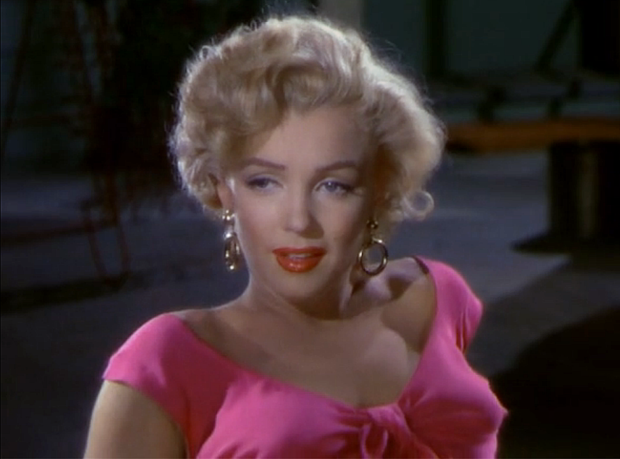These Are All Of The Intriguing Theories Surrounding Marilyn Monroe’s Death

In 1946, Marilyn Monroe signed with Twentieth Century-Fox and began her fruitful career as an actress.
Throughout the 1950s, Monroe starred in numerous classics, including All About Eve, Clash By Night, Gentlemen Prefer Blondes, How To Marry A Millionaire, and There’s No Business Like Show Business.
This strong lineup quickly catapulted Monroe to pop culture icon status and made her a household name across the globe.
Moreover, Monroe’s embodiment of femininity inspired numerous films, shows, and books.
So, when she tragically passed away on August 4, 1962, at only 36-years-old, starstruck fans everywhere were devastated.
And while the initial autopsy performed in 1962 deemed Monroe’s death a “probable suicide” by an overdose of barbiturates (sleeping pills), other narratives and conspiracies have surfaced over the years which call her true cause of death into question.
The Life Of Marilyn Monroe
While Monroe’s screen appearances may have appeared full of glitz and glamour, her personal life was unfortunately far from picture-perfect.

Wikimedia Commons; pictured above is Marilyn Monroe in the movie Niagara
Sign up for Chip Chick’s newsletter and get stories like this delivered to your inbox.
Originally born in 1926 as Norma Jean Mortenson, Monroe bounced around in the foster care system as a child. Then, at 16-years-old, she married her high school sweetheart James Dougherty.
Dougherty, a police officer, and Monroe were wed in June of 1942. But, their partnership did not last long. In September of 1946, the pair got divorced just before Monroe’s career really took off.
She went on to marry the famous baseball player Joe DiMaggio in 1954 but, again, the pair did not live happily ever after. Their marriage lasted for less than a year before Monroe was again a divorcee.
Finally, in 1956, Monroe married again. This time, she was wed to Arthur Miller– a playwright. Her third marriage did last the longest but, unfortunately, ended in divorce yet again in 1961.
Shortly after, in 1962, Monroe began filming the classic comedy Something’s Got To Give. Sadly, the title was all too telling of her depleted mental state.
While struggling with depression, Monroe turned to drugs and alcohol to cope. Monroe’s internal battle began to show in her work when she was often late to set and frequently forgot her script lines.
Many might not know that she was even fired from the film for “spectacular absenteeism.” While Monroe was able to re-enter the cast lineup, she would not live to star in another movie.
Monroe’s Tragic Death
On August 4, 1962, Monroe’s housekeeper Eunice Murray became alarmed after he was unable to reach the star. Murray knocked and knocked on Monroe’s door, but she was not responding.
Frightened, Murray alerted Ralph Greenson– Monroe’s psychiatrist– who ended up breaking a window and entering Monroe’s room. Greenson found her wrapped in bedsheets with a telephone still in her hand.
Monroe’s tragic passing made headlines around the globe. On August 6, 1962, The New York Times also reported that an empty bottle of sleeping pills was found on her bedside table.
“Miss Monroe’s physician had prescribed sleeping pills for her for three days. Ordinarily, the bottle would have contained forty to fifty pills,” the Times added.
This environmental finding, coupled with doctoral analysis later performed in Monroe’s autopsy, seemingly pointed toward an overdose.
“I ascribe the death to ‘acute barbiturate poisoning,'” reported Dr. Thomas T. Noguchi, who conducted the autopsy.
Dr. Theodore Curphey, Monroe’s medical examiner, underscored Noguchi’s report.
“It is my conclusion that the death of Marilyn Monroe was caused by a self-administered overdose of sedative drugs and that the mode of death is probable suicide,” Dr. Curphey said.
A toxicology report did reveal that Monroe had very high levels of choral hydrate and Nembutal. This, coupled with psychological autopsy reports from three separate mental health professionals, caused Monroe’s case to appear “open and shut.”
“Miss Monroe had suffered from psychiatric disturbance for a long time,” the report even stated.
Still, as time passed, more information entered the public eye and caused the masses to question the story of her death.
Death Discrepancies
Decades after Monroe passed, two people who played key roles in Monroe’s autopsy admitted to an allegedly flawed conclusion.
One man, named John Miner, was Los Angeles County’s Deputy District Attorney. He was also a liaison for the County’s Chief Medical Examiner-Coroner.
Miner first claimed that the contents of Monroe’s stomach– in other words, what she supposedly “ingested”– had mysteriously “vanished.” Moreover, Miner claims that the autopsy found no definitive evidence of Monroe even digesting any drugs.
It later came out that Monroe’s stomach content evidence was “accidentally” thrown out. But, Miner did not buy it.
“I find it frankly very hard to believe, and extremely hard to accept, that these specimens were in some fashion accidentally, inadvertently discarded,” Miner said.
In addition, he found it very suspicious that Monroe’s stomach showed no evidence of yellowing. This is a tell-tale sign of ingesting Nembutal orally. Plus, there were no signs of any needle incision sites for intravenous ingestion.
All of these signs forced Miner to conclude that Monroe was murdered.
“Marilyn Monroe took or was given chloral hydrate to render her unconscious. Someone dissolved Nembutal in water by breaking open thirty or more capsules. That person then administered the Nembutal-loading solution by enema to Miss Monroe using an ordinary fountain syringe or enema bag,” Miner claimed in a personal account published in the Los Angeles Times.
A second man, named Lionel Grandison, also came forward and claimed Monroe’s death was not a suicide. At the time of Monroe’s passing, Grandison was a coroner’s aide who alleged he was coerced into signing off on Monroe’s death certificate. Apparently, Grandison did not feel comfortable signing since “toxicological reports were missing.”
Additionally, and perhaps more shocking, Grandison admitted to supposedly reading Monroe’s diary, which he claimed contained plans to kill Fidel Castro. This narrative supports Monroe’s affair with President John F. Kennedy, who, while in power, allegedly made numerous attempts to murder Castro.
A Reexamined Autopsy
Despite these compelling testimonies, both Miner and Grandison were discounted as credible witnesses. Nonetheless, the intense conspiracies led to a reexamination of her autopsy in 1982.
This follow-up examination came to the same conclusion as the initial autopsy. Moreover, it also discounted the notion of murder in its entirety.
The report stated that such an act would have called for “a massive, in place conspiracy” with which they “uncovered no credible evidence” to support.
Today, rumors continue to swirl surrounding Monroe’s passing, and the public remains infatuated by her glamorous image. Still, the true events of her death on the evening of August 4, 1962, may forever remain a disputed mystery.
If true crime defines your free time, this is for you: join Chip Chick’s True Crime Tribe.
More About:Human Interest





